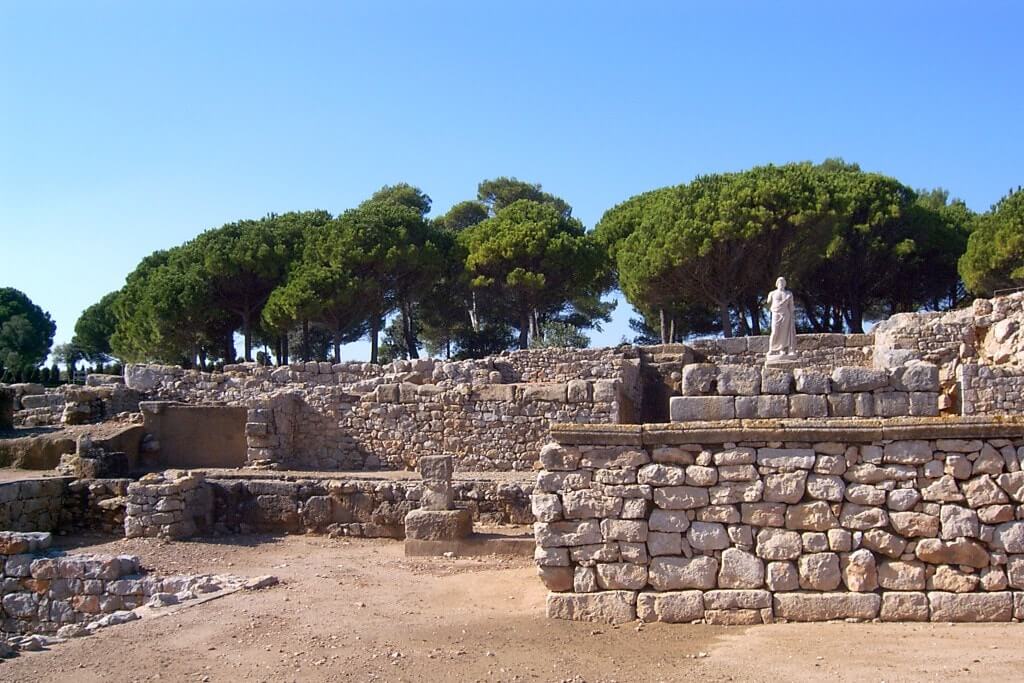
The Road of Ronda was in its origin a passage used by the fishermen to arrive at the most inaccessible coves and later by the police to watch the coast of smugglers.
Today the Road of Ronda is well known for its fabulous views of the coast of Girona, where the intense blue of the sea contrasts with the green color of the pine trees that surround the road.
This road has numerous sections that represent the most attractive paths for hikers in the province of Girona. Nature, stairs and viewpoints are mixed in the popular Camí de Ronda which, from the beautiful S’Agarò to Cap de Creus, runs through the most beautiful nooks and crannies of the Costa Brava.
The length of the Camino de Ronda
If you are in the Costa Brava and want to make a spectacular and unforgettable trip, you will not find better walks than the Routes of Ronda, where you will discover small and mysterious coves and cliffs that will leave you breathless, and beaches with a charm without equal.
In this article, we propose a simple hiking trip to do in pairs or with the family to spend a nice and different day. Where you will have the opportunity to know more about the Costa Brava, L’Escala and the amazing Roman ruins of Ampurias.
Road of Ronda: From Cala Montgó to Sant Martí of Ampurias
This is a very pleasant walk along the Road of de Ronda; it runs from Cala Montgó to the Ruins of Sant Martí of AMpurias. 6.5 km that you can do by walk or by bicycle, as there is hardly any difference. The duration of this tour is approximately one and a half hour.
To take strength and energy to make this fun trip, you can eat in our Can Miquel restaurant in Cala Montgó, where you will have the opportunity to taste the authentic and delicious Catalan gastronomy with flavors coming from the Mediterranean.
We start our walk and follow the GR-92, which runs in parallel to the sea (on our right) from La Playa, located in the center of L’Escala. We will pass by Punta Romana, where we will ascend to Paseo Dr. Pi i Llussà.
We arrive to Lampadòfor, a monument that commemorates the arrival of the Olympic flame and indicates the beginning of the pedestrian promenade of Ampurias. From there we can continue along the road or take an alternative path with wooden walkways that will bring us closer to the sea.
If we follow this path, we will pass through different beaches, such as Rec del Molí, where we will approach El Mirador de les Coves (caves). Once there, we will be right next to the ruins of Empúries, where this tour ends:
Founded in the 6th century a. C. by Greek merchants, Ampurias was an important port and mercantile base for the Greek expansion by the Western Mediterranean. During Roman times, the city continued to have importance but in the Middle Ages, its population moved to other nearby localities for fear of the usual Norman or Arab incursions.
However, the legacy of Ampurias was not lost altogether, in the century XVIII amateurs began to excavated here. Nevertheless, it was not until the early twentieth century when a scientific study began.
Thanks to these excavations initiated by the architect, Josep Puig i Cadafach, remains of great importance have been discovered both in the Greek and Roman times (temples, private houses, public buildings and other significant remains).
If you are looking to complement your visit to the ruins of Ampurias and learn more about its past, you will find a monographic museum located right on the site itself.
From our restaurant Can Miquel, we hope you find this route as pleasant and represents a magnificent option to know more about the wonderful Costa Brava.






